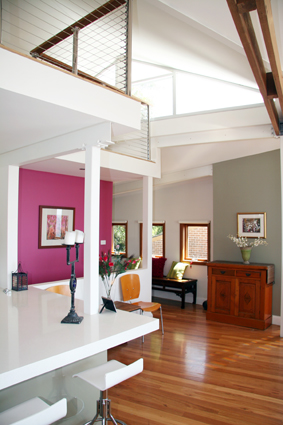"Nobody gets it right the first time" has become the most popular catchphrase in our current generation. And that's fine if you're cooking your first meal or changing the tires. But imagine making horrendous mistakes when you’re building your first home? Hey don't worry, it hasn't happened yet and there are fool proof methods to prevent them. Just use the following steps to ensure you have a clear and well planned idea for building your first house.
1. Legal requirements
Contact your local council and tell them about your plans to develop, they are a wealth of knowledge.
2. Designing your home
Designing a home is a none trivial task if you want it done properly. It's a juggling act - see our article Designing Your Own Home here. But you'll also need to consider the items below before you start designing.
a. Utilizing the landscape
The surrounding landscape and your family’s requirements will need to be analysed together, to ensure the new home is sited well in the landscape. See more here on what site data you should collect.
b. Safety
Safety should be a top consideration for anyone looking at building a new home or renovating. But rest assured there are 100’s of building codes that professional trades use to ensure there work meets Australian safety standards. If your plans have been approved by a certifying body such as council or a private certifier, the certifier will be required to check your build at critical stages during the building process to ensure building standards have been implemented corrected. Your builder is responsible for scheduling these regular council inspections. If you are an owner builder it will be your responsibility (council can tell you about these critical inspections). There will be around 5 or 6 inspections during the build of a new home, and if your builder does not call council to organise inspections call your council and find out why.
c. Go Eco-Friendly
Building a home today is much different from 10 years ago. The Australian government now requires that the property owners submit plans for approval that indicate the new home or renovation has energy and water saving measures included. If you do not indicate basic energy and water saving measures your plans will probably be rejected. All plans will need to have a BASIX certificate (or similar) submitted with them to your certifier. A BASIX certificate (NSW) is easy to produce – see the BASIX website. Going eco-friendly will not only ensure your house complies with current building standards but it will also make your house cheaper to run and thermally comfortable all year round.
d. Affordability
This is where most home owners come unstuck. They've been watching renovation shows, searching through glossy magazines and usually have a very unrealistic idea of what they can afford. You need to research what you can realistically afford and divide this cost by the floor area of your new home and include landscaping and driveways etc. Don't forget to factor into your budget other costs on top of your /m² rate, such as; council fees, engineering plans, design drawings and any other consultant fees (estimate - $50,000). For example if you have a budget of $400,000 minus $50,000 for extra costs first, then divide $350,000 by your floor area eg. 200m². This leaves you with $1,750/m² to spend. This is your budget, and your builder will need to know this upfront.
3. Find a designer
Finding a really good building designer/architect that ‘you’ feel comfortable working with requires a bit of research. See here for great tips on how to choose and building designer. The building designer you will turn your ideas into a reality - through physical Design Drawings. Council will need these design drawings to assess your building plans, and the builder needs the drawings to provide an estimate on construction costs. See our handy home construction cost calculator.
4. Find a builder
The best way to choose a builder is by spending time researching.
a. Ask friends
You will need to speak with people you know well, that will prove you with honest answers. Ask them who they used for their build in the past and if they were happy with their work. If you ask enough people you will start hearing the same names popping up- these are the builders you need to call.
b. Internet search
Do an internet search and view private social media sites. If they’re a professional builder everything you find should be professional and comforting to you. But don’t panic if you can’t find anything. Some older builders for example won’t show up online.
c. Licence check
Ensure you check they have a valid licence.
d. Ask the builder questions
Many builders today are not licenced carpenters - but managers of trades, so ask allot of questions about the type of work they have done and the way they work. If you're looking at becoming and owner builder you will need the services of a carpenter - not necessarily licenced builder.
5. Knowledge is power
It is very important to remember that during the process of building a new home or renovation you will need to monitor what's going on with your job (or hire someone to do this for you - a building design/architect). Understanding the building process is paramount - especially if you’re Owner Building.
See more about building and the Building Process here to help you on your way.

